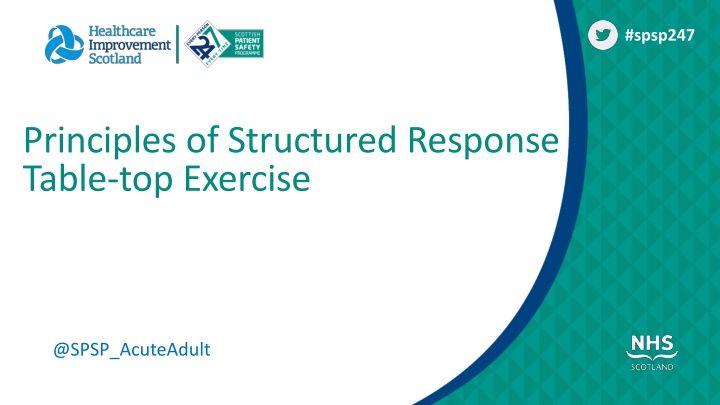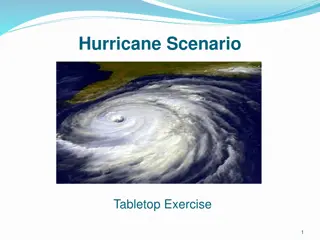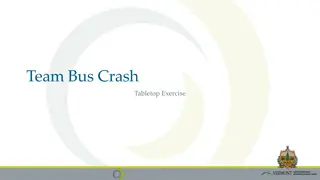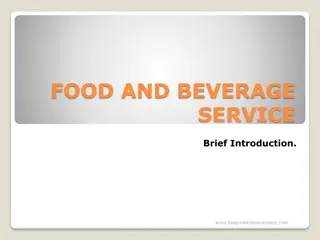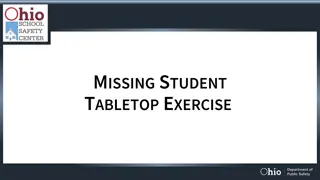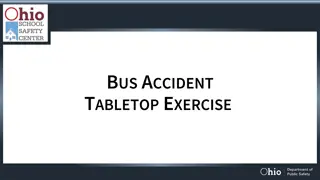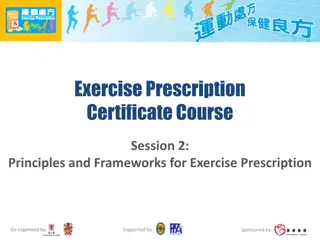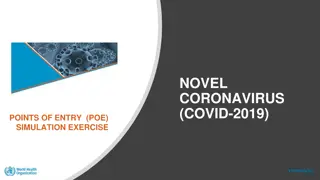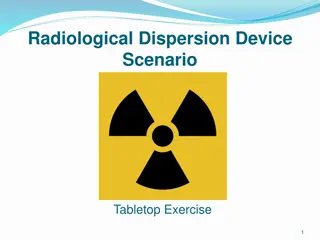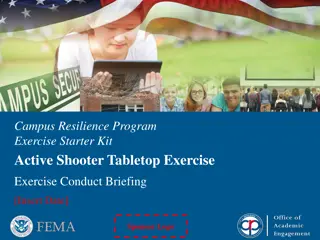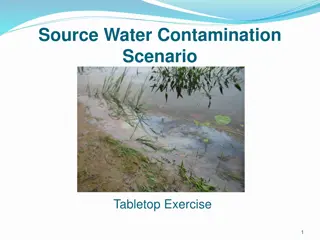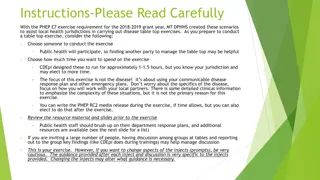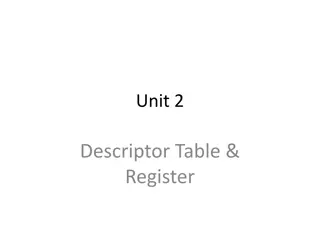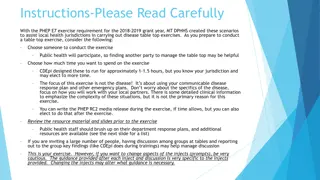Principles of Structured Response Table-top Exercise
A table-top exercise is a facilitated discussion that simulates an emergency situation, allowing teams to review current processes and test response principles in a stress-free environment. This session aims to identify areas for improvement in responding to deteriorating patients through structured discussions and action planning.
Download Presentation

Please find below an Image/Link to download the presentation.
The content on the website is provided AS IS for your information and personal use only. It may not be sold, licensed, or shared on other websites without obtaining consent from the author.If you encounter any issues during the download, it is possible that the publisher has removed the file from their server.
You are allowed to download the files provided on this website for personal or commercial use, subject to the condition that they are used lawfully. All files are the property of their respective owners.
The content on the website is provided AS IS for your information and personal use only. It may not be sold, licensed, or shared on other websites without obtaining consent from the author.
E N D
Presentation Transcript
#spsp247 Principles of Structured Response Table-top Exercise @SPSP_AcuteAdult
Agenda 09:00 Arrival 09:15 Introduction 09:25 Exercise objectives and how to play 09:30 Table-top exercise 11:00 Coffee break 11:15 Debrief 11:45 Gaps analysis & action planning 12:30 Wrap up and next steps 12:45 Closing
What is a table-top exercise? A table-top exercise simulates an emergency situation in an informal, stress-free environment WHO (2017) Exercise Manual A table-top exercise is a facilitated discussion that uses an unfolding clinical case, together with a series of questions, to generate discussion aimed at identifying and solving problems, and to refine existing approaches.
Aim of the session Through facilitated discussion the exercise aims to assist teams to understand their current response to the deteriorating patient and identify areas for improvement.
Session objectives Review current processes for responding to the deteriorating patient. Test principles of a structured response to the deteriorating patient, alongside current approaches. Identify key successes and challenges in the process of responding to the deteriorating patient.
Roles during the Table-top Exercise Facilitator: insert name(s) Evaluator: Clinical Team: - Medicine: - Nursing: - Resuscitation Officers: - Allied Health Professionals: Observer(s):
Rules of the Tabletop Exercise This is not a test Respond as you would in real life and allow others to do likewise Safe and closed exercise not to be shared beyond the room Focus on ideas for change
Structure of the table-top exercise This exercis will help guide you through a series of discussions focused on responding to the deteriorating patient We are all here to learn Scenario Beginning Questions & Discussion Scenario Middle Questions & Discussion Scenario End Questions & Discussion Next Steps Action Planning Debrief
Questions Any questions before we start?
Structured Response to the Deteriorating Patient Table-top Exercise Date and Location NHS xxxx Hospital: Clinical Team:
Simulation Scenario - Beginning Insert: Initial simulation scenario information about the patient
Discussion Session 1: Recognition Is this patient deteriorating? Is there a specific finding that would trigger you to think this patient is deteriorating? Who needs to know? What do you want to do while help is coming? How soon are you expecting help to arrive?
Simulation Scenario - Middle Insert: Middle simulation scenario information
Discussion Session 2: Respond and Review What is the working diagnosis? What are the patient s wishes? Are further investigations required? Who else do I need to call? What is the management plan? What is the observations frequency plan? What is the timeframe and/or criteria for reassessment? What is the triage decision?
Simulation Scenario - End Insert: Final simulation scenario information
Discussion Session 3: Reassess Are you still concerned about this patient? Is the working diagnosis still correct? What is the management plan now? What is the observation frequency now? Does the TEP need to be updated? What is the triage decision now? When are you going to review the patient again?
Coffee Break 15 minutes
Debrief Initial feedback from the participants on the Table-top simulation Review the strengths and gaps revealed during the simulation Recommend and prioritise key elements for inclusion in a revised response to the deteriorating patient; Develop an action plan
Strengths and gaps Consider Consider: Where are the strengths in the current approach? Where are the strengths in the SPSP principles of a structured response? What steps are bottlenecks that would benefit from further work? Identify and prioritise 3 key areas for improvement
Next Steps Developing action plan What learning has the table top exercise produced which would be relevant to feedback to local teams the wider health board HIS SPSP
Evaluation The SPSP Acute Adult Team would love your feedback on the Principles of Structured Response and the use of this tool to help us continue to improve it. Email us at his.acutecare@nhs.scot
